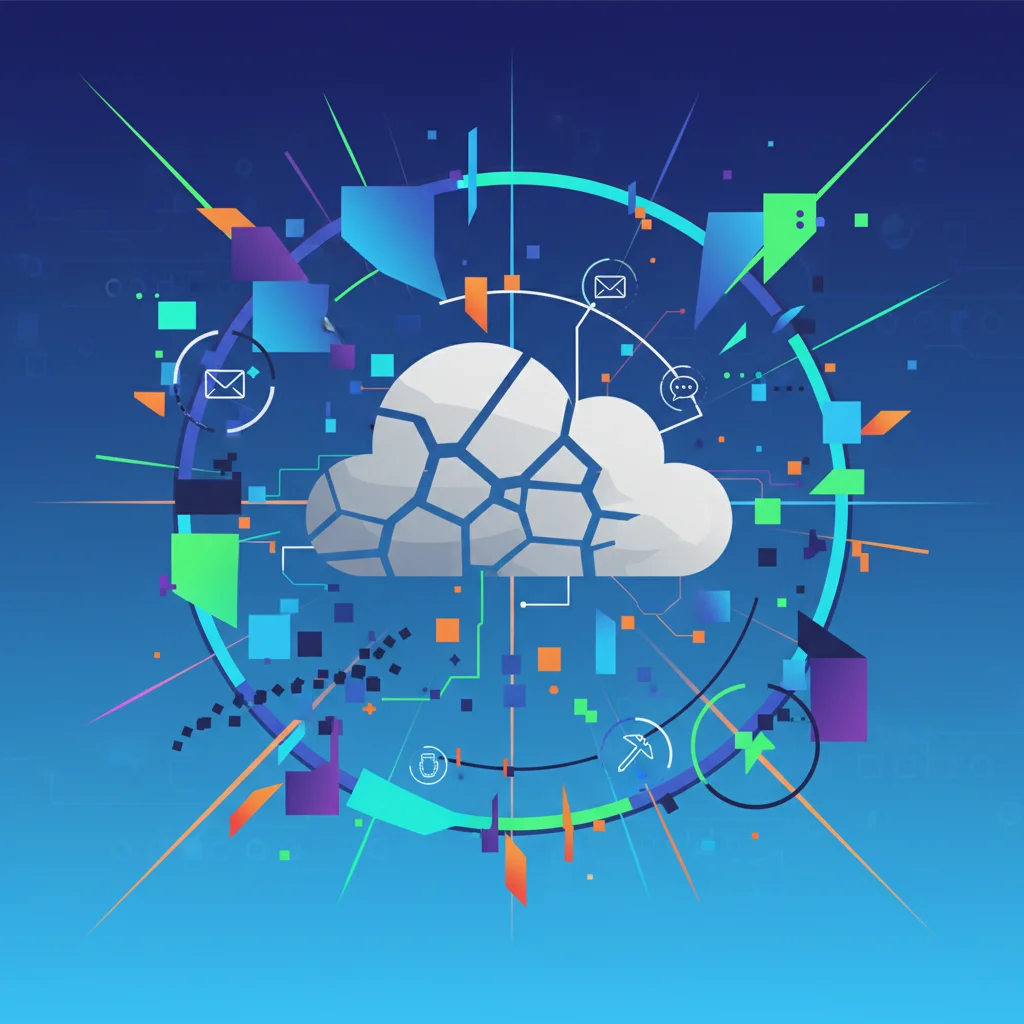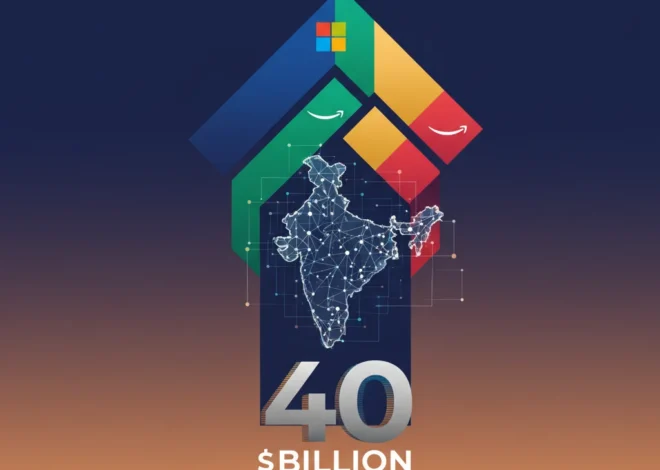
The Day the Cloud Stood Still: Lessons from the Microsoft Outage That Silenced the Internet
It started with a flicker. An email that wouldn’t send. A Teams message stuck in limbo. A game of Minecraft that suddenly disconnected. For millions around the globe, a seemingly normal day was disrupted as major services, from London’s Heathrow Airport to the banking giant NatWest, suddenly went dark. The culprit? A massive global outage across Microsoft’s Azure cloud platform and its ubiquitous Microsoft 365 SaaS suite.
The initial reports from the BBC painted a picture of widespread digital chaos, highlighting a critical vulnerability at the heart of our modern infrastructure. This wasn’t just an inconvenience; it was a stark reminder of how deeply our global economy, communication, and even entertainment are intertwined with a handful of colossal cloud providers. But what really happened, and more importantly, what can we learn from it? This isn’t just a story about a technical glitch. It’s a story about digital dependency, the illusion of infallibility, and the urgent need for greater resilience in the age of artificial intelligence and total connectivity.
Unpacking the Digital Domino Effect: What is a DNS Issue?
Microsoft quickly identified the root cause as a “DNS issue.” For the non-technical, that term might sound like arcane jargon, but it’s fundamental to how the internet functions. Think of the Domain Name System (DNS) as the internet’s phonebook.
When you type “www.google.com” into your browser, your computer doesn’t magically know where to find it. It first contacts a DNS server, which looks up “google.com” and translates it into a numerical IP address (like 172.217.16.142) that computers understand. This process happens in milliseconds, completely invisible to the user.
When Microsoft’s DNS failed, it was like the entire phonebook for Azure and M365 services was suddenly erased. The services themselves—the servers running Outlook, Teams, or hosting Heathrow’s website—were likely still running. But without DNS, no one’s browser or app could find the right number to call. The digital front door was gone, even though the house was still there. This is a critical distinction in understanding the nature of such outages; it’s a failure of access, not necessarily a failure of the core software itself.
The Billion Nuclear Gamble: Can Sam Altman's Oklo Reinvent Energy for the AI Era?
The Ripple Effect: When a Single Failure Grinds the World to a Halt
The list of affected services reads like a cross-section of modern life. It wasn’t just about corporate email. The impact was felt across vastly different sectors:
- Global Travel: Heathrow Airport, one of the world’s busiest travel hubs, experienced disruptions. In an industry where timing and data are everything, even minor IT issues can lead to significant delays and logistical nightmares.
- Finance: NatWest, a major UK bank, reported issues, highlighting the financial sector’s deep reliance on cloud infrastructure for both internal operations and customer-facing applications.
- Entertainment: The global community of Minecraft, a game owned by Microsoft, was unable to connect, demonstrating how even our leisure time is hosted in the cloud.
This incident underscores a crucial point for startups and established businesses alike: the danger of hidden dependencies. Your software might be perfectly coded, your servers might be optimized, but if your cloud provider has a bad day, you do too. The average cost of IT downtime is staggering. According to a 2021 survey by the Information Technology Industry Council, 91% of organizations reported that a single hour of downtime costs them over $300,000, with 44% stating the cost exceeds $1 million (source). When you multiply that by the millions of businesses built on Azure, the economic impact becomes astronomical.
A Familiar Story: A Brief History of Major Cloud Outages
While the Microsoft outage made headlines, it is by no means an isolated incident. The history of the internet is punctuated by similar “oops” moments from every major provider. This fragility is a feature, not a bug, of a system of such immense complexity. Here’s a look at some of the most memorable outages that shook the digital world.
| Provider & Date | Root Cause | Widespread Impact |
|---|---|---|
| Microsoft Azure (April 2024) | DNS Resolution Issues | Affected Microsoft 365, Heathrow, NatWest, Minecraft, and global Azure services. |
| Amazon Web Services (Dec 2021) | Automated scaling issues in the main US-EAST-1 region | Took down Disney+, Netflix, Slack, Ring doorbells, and even Amazon’s own delivery logistics (source). |
| Fastly (June 2021) | A single customer pushing a bad software configuration | Brought down major sites including The Guardian, The New York Times, Reddit, and the UK government’s website for nearly an hour (source). |
| Google Cloud (June 2019) | Network configuration change meant to be limited to one region was applied globally | Disrupted YouTube, Gmail, Snapchat, and many other services dependent on Google’s infrastructure. |
This pattern reveals a crucial truth: 100% uptime is a myth. No matter how much redundancy, automation, or AI-powered monitoring is in place, the complexity of these global systems means that failures are inevitable. The real question is not *if* they will happen, but how you prepare for when they do.
Mars is a Software Problem We Haven't Solved Yet
Cybersecurity Red Alert: Was It a Glitch or an Attack?
In today’s geopolitical climate, the first thought during any major infrastructure failure is often cybersecurity. Was this a technical error or a malicious act? A DNS outage, in particular, raises red flags because DNS is a prime target for cyberattacks, such as DDoS (Distributed Denial of Service) attacks, which aim to overwhelm the “phonebook” servers so they can’t respond to legitimate requests.
In this case, Microsoft’s statements pointed toward an internal technical failure rather than an external attack. However, the event serves as a valuable, real-world fire drill. It exposes how a targeted attack on a core infrastructure provider could have devastating consequences, effectively switching off entire sections of the economy. For cybersecurity professionals, these outages are a case study in systemic risk and a powerful argument for implementing Zero Trust architectures and robust disaster recovery plans that account for the failure of a primary cloud vendor.
Lessons Learned: Building Resilient Systems in an Unreliable World
So, what are the actionable takeaways for developers, entrepreneurs, and tech leaders? Simply hoping for the best is not a strategy. It’s time to embrace a new mindset of “designing for failure.”
For Developers and Programmers:
The art of modern programming is not just about writing efficient code, but about writing resilient code. This means anticipating failure at every level. Implementing multi-region or even multi-cloud failover systems is no longer a luxury for the paranoid; it’s a necessity. This involves using infrastructure-as-code tools to replicate environments across providers and employing sophisticated monitoring to automatically reroute traffic when one provider falters. It’s about asking, “What happens if this API, this region, or this entire cloud provider disappears?”
For Startups and Entrepreneurs:
For a startup, an outage can be an existential threat. It erodes customer trust and can halt revenue streams. The key lessons are:
- Understand Your Dependencies: Map out every third-party service your business relies on, from your cloud host to your payment processor. Understand their uptime history and have a contingency plan.
- Communication is Key: Have a clear, pre-prepared communication plan for outages. Be transparent with your users about what’s happening. A well-handled crisis can actually build customer loyalty.
- Avoid Vendor Lock-In: While it’s easier to go all-in on one provider like Azure or AWS, strategically using services from multiple clouds can provide crucial redundancy.
The Walled Garden's Last Stand: Is the UK About to Topple Apple's App Store Empire?
The Future is AI-Powered Resilience:
This is where the conversation turns towards innovation. The next frontier in cloud management lies in leveraging artificial intelligence. We are moving beyond simple monitoring to predictive analytics. Machine learning models can analyze vast amounts of telemetry data to predict potential hardware or network failures before they happen. AI-driven automation can execute complex recovery protocols—like shifting traffic across continents—in seconds, far faster than any human team could. The goal is to create self-healing infrastructure that can anticipate and route around problems before users ever notice.
Conclusion: The Cloud is Human, After All
The great Microsoft outage of 2024 was more than a technical glitch. It was a global lesson in humility. It reminded us that the cloud, for all its abstract and ethereal branding, is a physical, complex, and fundamentally human-built system. And human-built systems fail.
This event doesn’t signal the end of the cloud. On the contrary, it highlights its critical importance. But it does mark a shift in our relationship with it—from blind faith to a more mature understanding of its strengths and weaknesses. The path forward requires a renewed focus on resilience, a commitment to smart architectural choices, and the continued innovation of tools, including AI, that help us manage this beautiful, powerful, and fragile infrastructure that now underpins our entire world.


